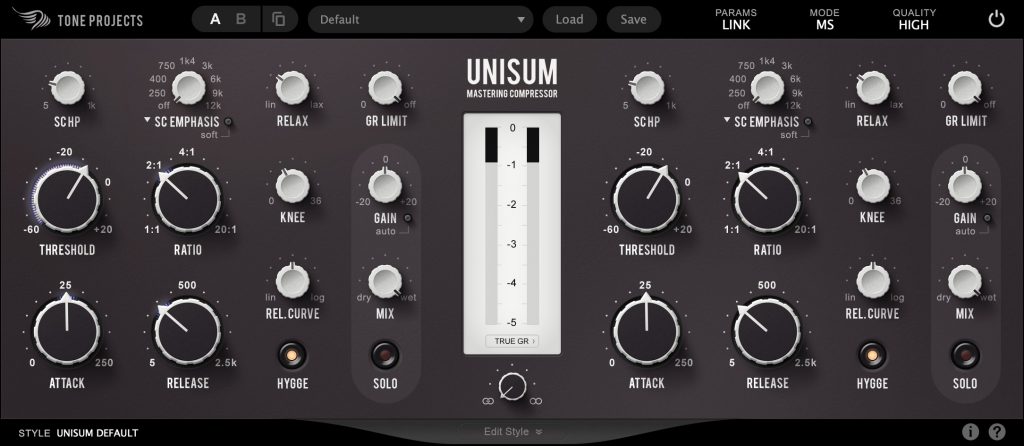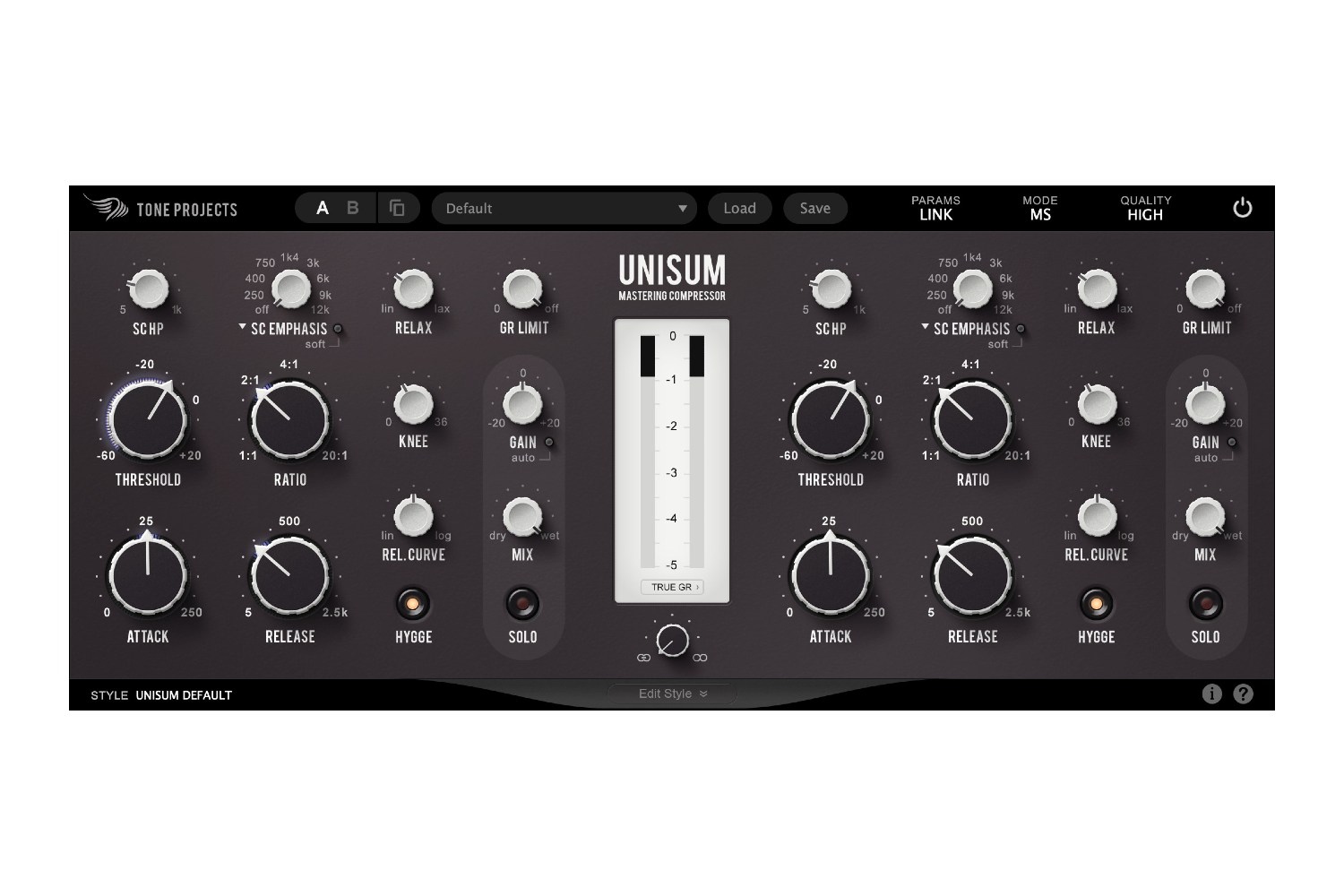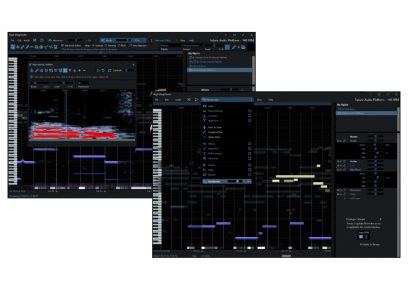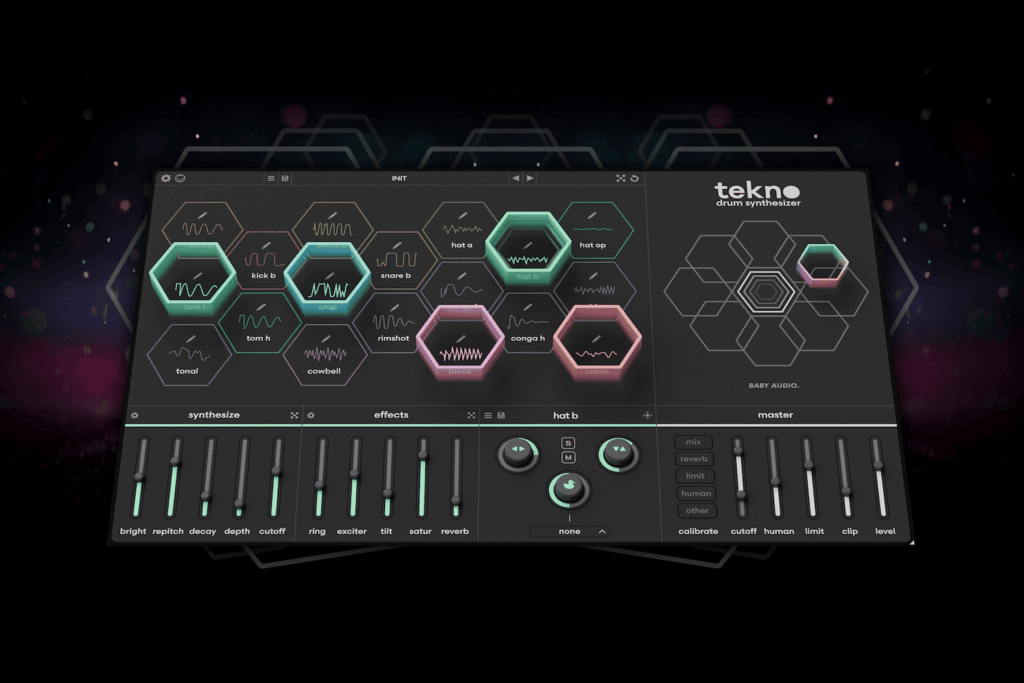Tone Projects | Enquire for pricing
Every once in a while, a plugin producer releases a plugin that eclipses its competition so unanimously that a new benchmark is set, one to which any subsequent rival offerings are tirelessly held to on audio gear forums and YouTube channels dedicated to plugin reviews.
Tone Projects’ recently-released Unisum Mastering Compressor is a prime example of one of these paradigm-shifting plugins, putting rival offerings from multi-million dollar companies with dozens of employees to shame. Tone Projects, FKA OtiumFX, is the brand under which Danish polymath Rune Lund-Hermansen has been quietly releasing exemplary plugins for the better part of 20 years.
Read more product reviews here.
If you’ve ever spent time trawling endless debates on internet forums about compressor plugins, you’ll have likely heard the names Molot and Kotelnikov being thrown around. These notorious compressor plugins, produced by VladG and Tokyo Dawn Labs respectively, rival plugins produced by the biggest names on the market, and have countless advocates throughout the professional audio world. Not only were these plugins outperforming more well-known products at a fraction of the price (or even for free), these were one-person operations outdoing entire teams of software engineers. While Vladislav Goncharov’s vivacious Molot compressor and Fabien Schivre’s glossy Kotelnikov compressor are two of the more well known “indie” plugins, there are countless low-cost plugins borne of the bedroom tinkering of competent engineers that deserve far more attention than they receive.
While Unisum might be comparable to Kotelnikov in terms of cultural impact, Unisum is a far more advanced product, and is playing an entirely different ballgame. Unisum is designed around the ethos that every song is different, hence every mix has its unique features, and the only way to treat each mix to its merits is by offering a supremely tweakable compressor that can adapt to every scenario it encounters. In practice, this means that you can alter just about every aspect of the compressor to achieve your desired style of compression – whether your goal is to eke out some extra dB’s of compression on a mix without introducing any artefacts, or to really add some punch to a master, Unisum will do the job better than anything else if you’re patient enough to dial in the settings properly.
The only caveat is that this is a very advanced compressor – you’ll only get as much out of it as you’re willing to put into reading the manual and getting a full understanding of what each switch and knob does. That being said, Unisum is packed with plenty of presets to flick through to show you the full spectrum of compression styles that it is capable of (esteemed presetter/Gearspace user bmaniac has created an outstanding collection of additional presets right here if that’s your kind of thing).
Unisum’s GUI resembles the tried and true design of hardware mastering compressors, with a button at the bottom of the plugin revealing the advanced controls that you won’t see on a hardware unit. A button labelled Hygge, a word that means something similar to cosy in Danish and Norwegian, enables the Hygge circuit which gives a warmer and thicker sound to the compressor by subtly altering the harmonic, transient, and frequency responses. Unisum has all the features of a true mastering compressor, you can switch between mid/side and L/R processing, and then slide between dual mono processing or channel linked processing – or a blend of therein.
The filter option lets you choose how much influence high frequency or low frequency content has on the channel linking, while the limit function limits the difference in gain reduction allowed between the two channels. These functions make Unisum incredibly precise when used to rebalance skewed mixes in mastering, all the while remaining completely transparent in its operation. The RMS/peak bias function allows you to control how the compressor’s linking occurs – any pumping artefacts can be easily managed by making the compressor favour RMS readings of loudness when linking the channels. Even this feature alone is an incredible asset for a mastering engineer – you can do some serious mid/side compression with Unisum without getting any artefacts.
The sidechain controls in Unisum are unparalleled, along with the standard high-pass filter, you can choose between emphasising a desired frequency, dipping that frequency, or a full low-pass filter. The relax control allows you to tame the compressor’s responsiveness to transients, making an excellent case for the Unisum as your go-to drum bus compressor when used in conjunction with the sidechain controls and the wet/dry function. The plethora of presets marked with the prefix ‘drum bus’ suggests that Tone Projects are fully aware of Unisum’s sonic potential.
The ultimate secret behind the absolute sorcery that Unisum can conjure up lies within the attack/release modifiers section. This is the part that can really make your head hurt when trying to comprehend, but once you figure it out, the keys to the city are yours. Regular compressors have attack and release controls. Put crudely, Unisum’s attack and release controls have their own attack and release controls. The loud xTime and quiet xTime controls let you fine tune how the attack and release functions of Unisum behave at different levels of compression intensity, giving you a whole new level of control that you can fine tune to fit your unique mix.
Part of the magic of optical compressors like the LA-2A is how they compress louder and quieter sounds at different speeds. By altering the attack/release modifiers, you can tune Unisum to sound just like an optical compressor, or whatever style of compressor takes your fancy. Master this section of the plugin and you can build whatever kind of compressor you like, whether it exists yet or not. Unisum even gives you 15 different styles of compressors to choose from as a starting point. The possibilities are endless. A great way to learn how Unisum (and compression in general) works and how to use it is by reverse engineering these compressor styles and seeing what parameters differ among them that gives them their unique sonic fingerprint.
Unisum’s triumph cements Tone Projects’ place on the list of independent plugin producers who have transcended the competition with their idiosyncratic offerings, proving once again that it is the curiosity driven tinkering of the dedicated few by which technology advances, not the soulless R’n’D of profit-minded corporations.

Head to Tone Projects for more.







